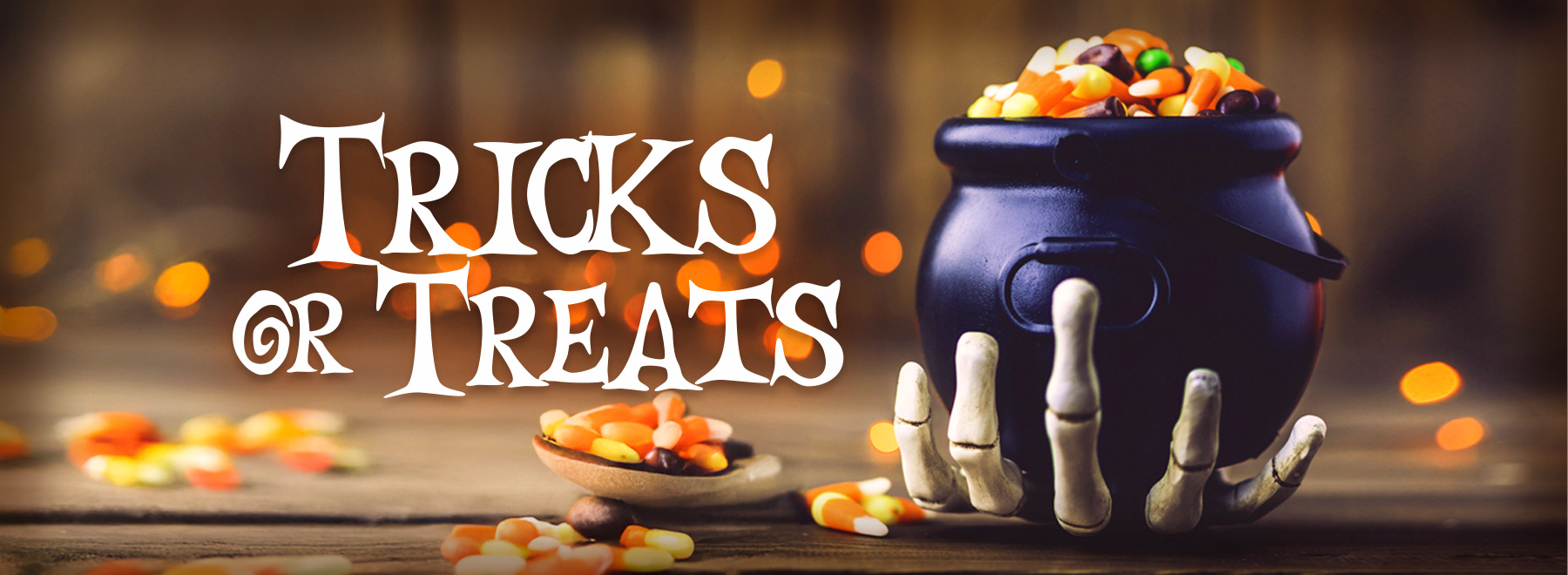Fun without fright is key for kids, adults with allergies during holidays
Managing allergies in children can be fraught with fright for parent and child alike, but allergists say Halloween and the upcoming season can be perhaps the safest time of year for all if a few tips are followed.
About 6 percent of the U.S. adult and child population have a food allergy, with millions more with allergies of some variety. For parents, it can be a concern on top of October already being a month of transition from summer heat to autumn winds.

“This is a holiday that comes at a time that’s generally not too cold yet in central Mississippi,” said Dr. Gailen Marshall, the R. Faser Triplett Sr. MD Chair in Allergy and Immunology at UMMC and president of the American College of Allergy, Asthma and Immunology (ACAAI). “But, if it happens to be cool and the child or parent has allergies and/or asthma, running around in the night air can be a risk for exacerbation of asthma symptoms.”
The ACAAI’s tip sheet for parents during this season of spook-tacular festivities allows for mindful fun during trick-or-treating or costume parties.
“The most concerning part of the Halloween experience each year may be for those kids with known or even hidden food allergies,” Marshall said. “There are practical ways to help minimize risk.”
Those ways include:
- Eats before treats – Be sure to feed your little one dinner before they go trick-or-treating. They’ll be less tempted to stick their hands in the candy bag before they get home to check their loot with mom and dad.
- Don’t be scared, be prepared – Parents of kids with allergies shouldn’t leave home without a cell phone, wet wipes and, if applicable, any controller medications and/or emergency ephedrine.
- Wait until you’re home before eating candy – It’s safe to wait until the night’s haul is done before determining safe and unsafe candy.
- Give the neighbors a heads-up – Try giving trusted neighbors a batch of treats in advance that are known to be safe so they can hand it out.
- Other types of treats are fun – Ideas for non-food treats include coloring books, pencils, stickers, stuffed animals, toys, cash and modeling clay.
- Dress safely for success – Crafty parents can make their child’s costume instead of purchasing one. A getup featuring gloves can help prevent contact with any unsafe food items. And it’s best to avoid makeup of any kind if your child suffers from eczema or similar skin allergies.
- Ghost hunting can also be fun – Alternatives to door-to-door hunts for treats are increasingly popular, such as movies, slumber parties and scavenger hunts for safe treats and other items. Some malls, health organizations and local libraries now host candy-free trick-or-treat nights.
- More than just witches and ghosts can be unseen – Children with asthma and allergies should be cautious around pets and homes with people who smoke indoors. Those are triggers that can cause an asthma attack. And wash any previously-worn costume to keep dust and other allergens away.
After the Halloween treats are gone, the season for family gathering begins in earnest for the holiday season. ACAAI offers allergy-friendly alternatives to holiday mainstays such as candles, wood-burning or gas fireplaces and those freshly-cut, pungent fir trees and wreaths.

“Asthma symptoms in particular can be triggered by fireplaces,” said Dr. Charles Grogan, medical director for the Allergy, Asthma, and Clinical Immunology section of the Division of Clinical Immunology. “Gas fireplaces can release volatile organic gases, while woodburning furnaces can have harmful small particulate matter than can impact asthma.”
ACAAI recommends flameless candles or electric fireplaces, which can provide a calming vibe without the smoke.
And feel free to make room for dessert after holiday dinner – just make sure you know what’s in it, allergists advise. Some reactions involve just a trace amount of certain foods, which can be a concern with desserts baked in a commercial kitchen, such as in a grocery store.
“One of the most common accidental exposures during the holidays is with peanut and tree nut allergies,” Grogan said. “Tree nuts in particular can be cross-reactive, so always make sure to let any nut-allergic family members know if you bring anything with nuts.”
Additional holiday season tips from ACAAI involve:
- Trees and wreaths – One type of contact skin allergies is to a substance called terpene, found in tree sap. Plus, some live trees still have mold spores and pollen on them, which are natural triggers for allergies. It’s best to rinse off a live tree or dust off an artificial tree each year to make for a clean decoration.
- Dust and dander – Triggers like dust, mold and pet dander are invisible and require diligent house-cleaning to keep under control for someone with allergies. When attending a family party or traveling to see friends, be sure to pack allergy medicine in case symptoms arise.
- Hugs and kisses – Nothing says holiday time like being around friends, family and gifts. But, be sure to get your flu shot before the peak of flu season. In recent years, versions of the shot have been made safer for those with egg allergies.
“The RSV shot is also now available for our older patients,” Grogan said. “This can protect both older patients with asthma as well as our littles who are at highest risk.”
To see a specialist at UMMC’s Allergy, Asthma and Immunology clinic, call (888)815-2005.
The above article appears in CONSULT, UMMC’s monthly e-newsletter sharing news about cutting-edge clinical and health science education advances and innovative biomedical research at the Medical Center and giving you tips and suggestions on how you and the people you love can live a healthier life. Click here and enter your email address to receive CONSULT free of charge. You may cancel at any time.



